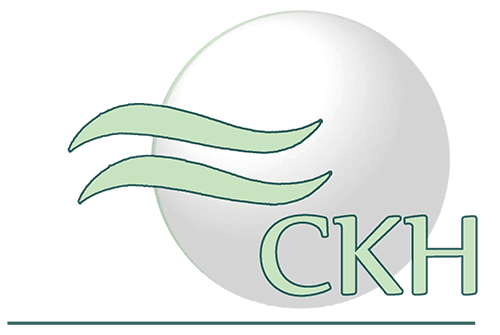How does trauma create psychological imprints? In this chapter of the Organon of the Creative Homeopathy, I will dive deeper into the subject matter. While we discussed the topic of Symptom Language in our previous article and identified trauma-based imprints as the root cause for pathological somatization, I will now explain these conflicts tend to reappear in cycles as an opportunity to neutralize these underlying issues.
Psychological Imprints & Trauma Restaging
The Groundhog Day Principle
The critical question is, how do we eliminate those psychological imprints? The answer is simple: we repeat the same archetypical conflicts that created the distortions in the first place—that is why we repeatedly rotate in the same cycles of suffering. Like in the movie “The Groundhog Day,” we repeat the same challenge until we change our attitude towards it. We subconsciously instigate the circumstances to restage an old trauma. Accordingly, we replay the quest until we solve it in a fashion our higher self intended it. Our Soul’s ambition is to own the conflict.
Mental or physical pain = acting against true self.
For example, suppose we had a traumatic experience with one of our parents that we could not neutralize and which caused a conflict between our ego program and our higher aspect. In that case, we start subconsciously looking for a partner or a superior at work to instigate the same archetypical storyline to neutralize and solve the situation in a way we were not capable of before. To give a particular example, I believe everybody has heard of those women who always end up abusing them with a similar partner. I hope you get my gist here. Even if the individual believes they are looking for a kind and loving partner, the subconscious/soul might have quite the opposite idea.
The bottom line of the last few chapters is simple. Pain is always a signal that we are acting against our true selves. The work of a Creative Homeopath is to help his clients discover where and why they consented to do so. What initial purpose and trauma need to be owned, neutralized, and integrated?
Homeopathic Trauma Therapy
Misunderstanding “Trauma”
In this chapter, I like to give you a simple example based on a common trauma that most people have to deal with. Do you remember the “attachment issue” I promised? Yes, that’s what I want to elaborate on. Unfortunately, before we can go into that, we need to define the word “trauma.” Most people think of a highly challenging situation like physical abuse or specific experiences you might only have in a war-like scenario.
The truth is, it can be pretty simple to create a traumatic imprint. It can be as simple as getting a harsh insult in a vulnerable situation, a judgment by a loved one, a shameful sexual incident, or any event that creates strong negative emotions that look relatively harmless at first glance. Especially during our childhood, the circumstances that lead to a trauma program can seem very simple on the surface, but they are perceived differently by the insight.
Let’s talk about a common trauma, that most people think hurts the most—losing a significant other.
Losing a loved one
Losing a person that is very dear to us can be extremely painful. We can experience it with partners, friends, family members, and even animals. We feel that the sting in our heart chakra is a controversial topic because, partially, the pain derives from the fact that we tend to stop the flow of our love. Essentially, we lost the person to project our energy. The healthy cycle of giving and taking Prana or Chi is interrupted. We suffer from our own love energy trapped in our hearts. That should not be the topic at this point, but it brings us back to a perspective of self-responsibility, which is a critical point in the philosophy of Creative Homeopathy.
We are responsible for our emotions!
So we lost a person very close to us, and it hurts—fair enough. It could be the partner who ran away with another lover, the mother who was killed in a car accident, or the beloved grandfather who died of cancer. Our inability to deal with the situation correctly from the point of spiritual maturity creates pain—we inflict it on ourselves. Of course, no one likes to hear that at this point, which is okay. It makes us human in the first place, but the harsh truth is that we are responsible for our emotions.
Avoidance or Control Issues
Now we experience trauma that creates an imprint in our psychological programming. The ego intends to avoid similar suffering at any cost. Eventually, it will fall back on specific tactics to avoid a similar situation in the near future. It might decide to prevent and shut down any emotional closeness by rejecting everyone that could evoke intimacy, so to say. Of course, the primary reason for that approach is to avoid vulnerability. This will lead straight to depression. Even if the person can open up again to pick up a healthy cycle of giving and accepting love, the ego is still involved. It is marked by the former unpleasant experience and will try to bend the probabilities.
What you fear the most will meet you halfway.
Eventually, the fearful nature of our ego will try to control the situation. If it can’t do so, subtle panic will arise, and another cycle of suffering will emerge. As some of us know, control is just an illusion in the face of karmic contracts. Let’s not forget how much time and energy it consumes to supervise your environment constantly. It is exhausting and drains our energy.
Lost relationship due to an affair
This behavior even leads us right into a situation where we repeat the initial trauma. This principle becomes extremely obvious in individuals who lost their beloved former partners due to an affair. So their ego’s biggest fear is that another lover could “steal” their significant other’s heart. Those people will likely clandestinely try to control every step of their new “better half.” Of course, they know precisely how annoying it feels to be spied on constantly; therefore, they will try to cover up their urge to control. Of course, they would like to check the other’s phone and implement a variety of subtle “precautions.” Eventually, it will all come to the surface.
Even if the controlling mechanisms are suppressed or disguised very well, there will always be a certain energetic tension, which the other individual can sense intuitively—a subtle feeling of constriction. That suspense will sooner or later lead to a situation in which the initial trauma will repeat itself. When the restrictions and projections become unbearable for the controlled individuals to deal with, they will either choose freedom or die. One way or the other, it will abandon the traumatized person who now becomes a retraumatized one—this way, the same pattern repeatedly reemerges in different manifestations. Still, it is always the same archetypical drama of loss and deficiency.
Conclusion
My main goal regarding this article was to give you a basic understanding of how specific traumatic experiences create psychological imprints. Therefore, I gave you a few examples of how insignificant those experiences might seem on the surface but also in what manner they might harbor a significant potential for future conflicts.
Before we get closer to our solution on how to neutralize such trauma-based imprints, I would like to give you another detailed example of my favorite trauma scenario. The purpose is to offer a philosophical guideline for gaining an alternative perspective and a better relationship with loss issues in the following article.














0 Comments